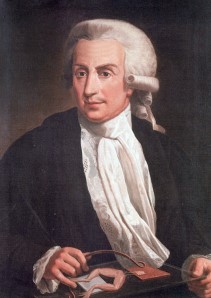A brilliant scientist who was born in 1737 and died in 1798. In his studies, dissecting frogs on a table, while conducting experiments with static electricity, one of Galvani’s assistants touched a frog’s sciatic nerve with a metallic scalpel, which produced a muscle contraction (like a cramp) in the region touched whenever sparks were produced in a nearby electrostatic machine. Such an observation prompted Galvani to investigate the relationship between electricity and animation – or life. That is why Galvani is credited with discovering bioelectricity. Today, the study of Vane effects in biology is called electrophysiology, the term “galvanism” has been used only in historical contexts.
Bioelectricity is the part of science that deals with electrical phenomena in biological systems, whether due to endogenous electric fields, originating inside living beings.
The existence of a difference in electrical potential across the membranes of all the cells of the body is scientifically verified, and some cells such as those of the nervous system (neural) have specialized in order to constitute systems whose central function is to trigger, propagate and process impulses electrical. The nervous systems of animals, structured mainly by neurons, constitute intricate electrical circuits. Electricity is a natural process inherent in each and every material system, with electrical interaction being the central interaction for establishing the structure of matter as conceived today. All chemical reactions, including biochemical ones, are explained through the electronic interaction of atoms, molecules or ions.
In living organisms all cells operate under this principle; however, special cells in the brain and throughout the body are better understood only by directly explaining their electrical behavior. Perceptions of environmental stimuli are directly linked to biological mechanisms for converting stimulating signals into electrical impulses recognizable by the body’s systems. Each pattern of light, sound, heat, pain, each muscle twitch of the fingers, each thought, translates into a sequence of coded electrical pulses, stored and interpreted in the central nervous system of the higher organisms.

Certainly at some time in your life you asked yourself:
Does our human body produce electricity?
Our body is composed of approximately 60% saline solution, medicine calls this solution saline, so it is an excellent conductor of electricity. Every pulse of ours, that is, every beat of our heart, produces a current of one click per second that produces one watt of electrical power. This potency varies from person to person, and depends exclusively on the organic constitution of the cells and also on the conductivity of the body. So, the answer to our question is:
Yes, our body produces electricity.
This electricity, which in this case is called bioelectricity, is very easily visualized through an electrocardiogram or electrocenfalogram. It is through a metal plate placed in the hand of a person that it is possible to view the readings of bioelectricity that vary from 5,000 to 20,000 electrostatic volts.
Every manifestation of living beings takes place through Energy or work. Be it muscle contraction (electrical energy from muscles), protein synthesis (chemical energy from food), production of bioelectricity (chemical energy from food). The unit of measurement for Energy or work is the joule. A joule corresponds to the work or energy required to lift the mass from 0.1 kg to 1 meter high (at sea level).
Living beings are true power plants, as most phenomena use electricity. The cells, as we have already seen, have a potential difference (ddp) on both sides of the membrane. The origin of this ddp is a heterogeneous concentration of ions, mainly Na +, K +, Cl- and HPO4 -3. The studies of the generation of electrical potentials (bioelectrogenesis, biopotentials and bioelectricity) is a broad field of research, being a new area to be unveiled. Bioelectricity or Bioelectromagnetism (sometimes also called biomagnetism) refers to the static voltage of biological cells and the electrical currents that flow in living tissues, such as nerves and muscles, as a result of action potentials.


It’s really a nice and helpful piece of information. I’m satisfied
that you just shared this useful info with us. Please stay us informed like this.
Thank you for sharing.